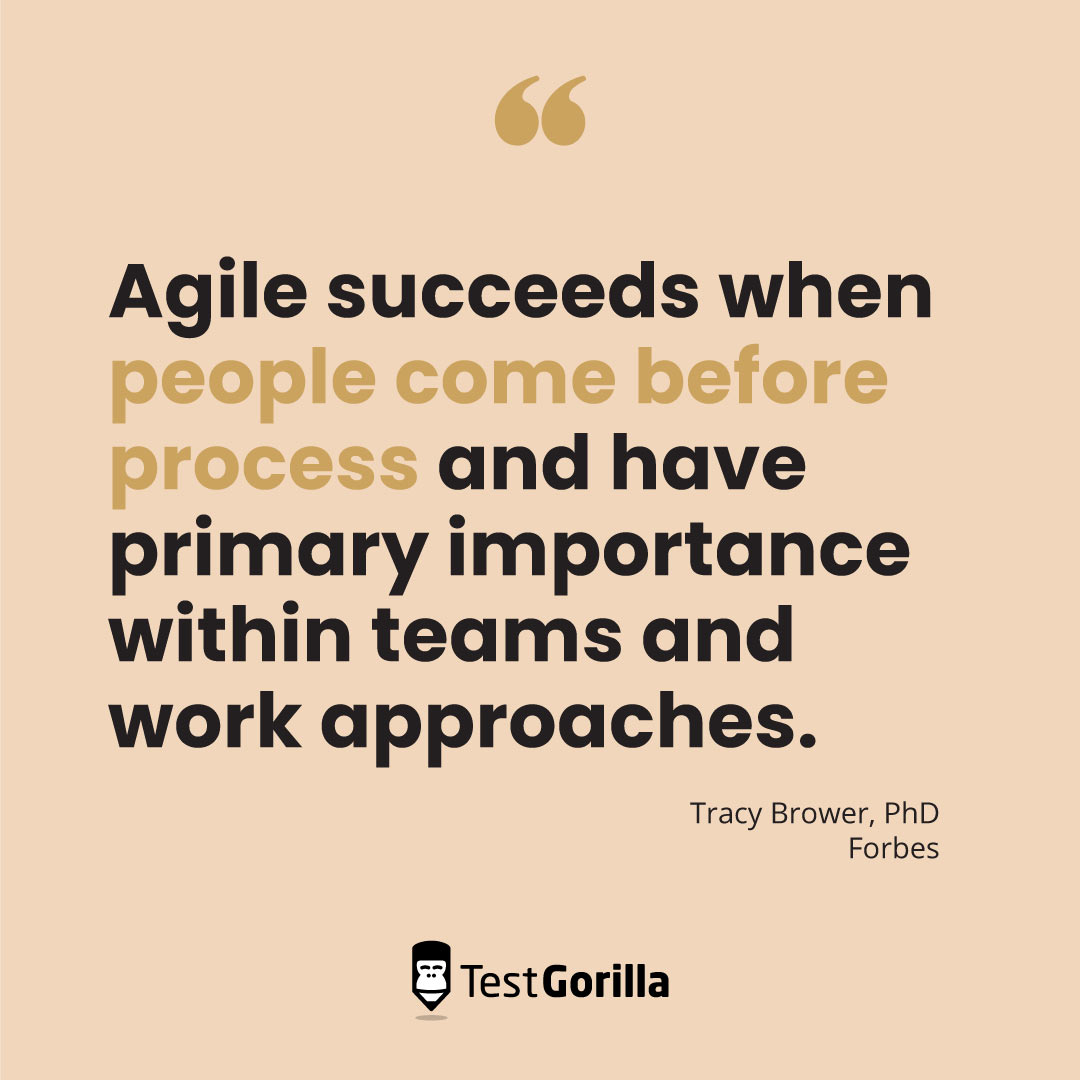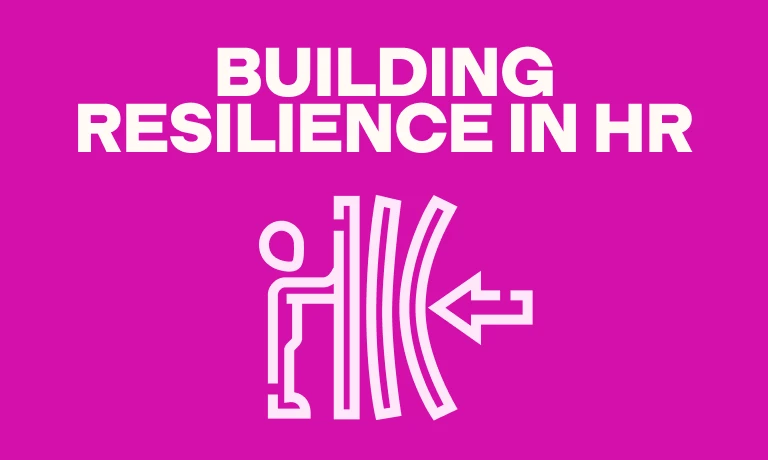The connection between skills-based hiring and agile recruitment
Quick, efficient, and effective — it’s focused on adaptability, innovation, and putting the right person in a role.
Now ask yourself: Are we talking about agile recruitment or skills-based hiring?
Agile recruitment has helped countless hiring teams increase performance and hire better candidates. It has a focus on communication and quality.
We believe skills-based hiring aligns perfectly with agile methods. They share many key qualities and complement each other’s processes as if they were built to be together.
Skills-based practices are also accurate and quick, enabling you to recruit members ready to join your next sprint.
This article discusses the close connection between skills-based hiring and agile recruitment, touching on their similarities and how natural it is to combine the two.
Table of contents
- What is agile recruitment?
- What is skills-based hiring?
- How skills-based hiring enhances agile recruitment
- How traditional hiring hinders agile recruitment efforts
- The 6 similarities between skills-based hiring and agile recruitment
- How to combine skills-based hiring and agile recruitment
- Integrate skills-based hiring into agile recruitment to optimize your process
- Sources
What is agile recruitment?
We’re sure you’ve heard of the agile methodology.
Agile is a method of developing software that started in 2001. It involves splitting projects into targeted phases, driving projects forward with data insights, and focusing on flexibility and adaptability.
Its popularity has soared since then, giving great advantages to nearly every team that adopts it. Highly successful agile transformations usually deliver around 30% gains in:
Efficiency
Performance
Customer satisfaction
Employee engagement
Agile transformations also generally make the organization five to 10 times faster while increasing innovation.
For more information and insights into skills-based hiring’s relationship with the agile methodology, read our article on skills-based hiring and agile teams.
So what about agile recruiting?
Agile recruiting is integrating the agile methodology into your recruitment process. It breaks down recruitment campaigns into digestible phases, then prioritizes and completes those phases by targeted deadlines.
Like agile software development, agile recruiting promotes communication, feedback, quick response to change, and transparency.
Agile recruiting has considerable advantages over traditional hiring:
Higher applicant quality
A speedier recruitment process
Increased flexibility when adjusting or regulating the workflow
The ability to provide instant, real-time feedback to candidates
Many hiring managers love and rely on agile recruiting to ensure smooth success and quality hires.
What is skills-based hiring?
Skills-based hiring uses skills as the foundation and focus of recruitment efforts, often removing reliance on applications and resumes, and swapping out traditional unstructured interviews for structured interviews.
It widens your talent pool by including nontraditional candidates (like those without degrees) and verifies their skills before they’re working for you.
Skills-based hiring is hitting the ground running. According to TestGorilla’s State of Skills-Based Hiring report, 76% of organizations used skills-based practices in 2022.
It isn’t surprising so many companies are adopting skills-based hiring. It carries countless business benefits, such as reduced bias, time-to-hire, and mis-hires.
For a deep dive into this topic, read our blog on skills-based hiring practices.
The best insights on HR and recruitment, delivered to your inbox.
Biweekly updates. No spam. Unsubscribe any time.
How skills-based hiring enhances agile recruitment
So how does skills-based hiring tie into agile recruitment?
Agile recruitment aims to zero in on the ideal candidate as quickly and efficiently as possible — and so does skills-based hiring. Skills-based practices naturally create an agile process without even trying to integrate agile recruitment.
Why don’t we compare the two concepts?
To start, here’s the agile recruiting manifesto:[1]
Individuals and interactions over processes and tools
Quick, quality hires over comprehensive documentation
Customer collaboration over contract negotiation
Responding to change over following a plan
Now, let’s compare those principles to skills-based hiring:
Agile recruitment manifesto | Skills-based practices |
Individuals and interactions over processes and tools | Valuing people and skills over “tried and true” methods |
Quick, quality hires over comprehensive documentation | Prioritizing quality candidates and hires over resumes, pedigree, and connections |
Customer collaboration over contract negotiation | Flex to find the ideal hire, like upskilling a candidate with 75% of the requirements instead of adhering to tight rules |
Responding to change over following a plan | Adapting to change by deploying the right skills rather than sticking to rigid roles |
The connection is pretty clear.
Another similarity between the two concepts is transparency.
Agile recruitment enables hiring managers to see into the process and prioritizes frequent feedback and communication.
Skills-based hiring uses tools like skills tests to assess and verify candidate skills before they get too far in the hiring process.
Both practices waste no time validating information and ensuring transparency. This is because agile recruitment and skills-based hiring have the same base mission: efficient, quality hires.
This means it’s not only that skills-based hiring aligns with agile recruitment. It’s also that traditional hiring is holding agile recruitment back.
How traditional hiring hinders agile recruitment efforts
Agile recruitment relies on using speedy communication and flowing smoothly from sprint to sprint — these processes are hindered by traditional hiring’s focus on resumes, work experience, and education over skills.
After all, the fastest way to recruit a suitable candidate is to know whether or not they have the skills to get the job done.
Does traditional hiring assess skill? Only 40% of employers test skills or general abilities, and this number includes controversial job IQ tests.
Failure to define and determine skill slows your process and increases the chance of mis-hires — something that directly goes against agile recruitment.
An article from Forbes says one of the best ways to increase agility in recruitment is by assessing candidate skills.[2]
It not only improves hire quality from the start, but it also gives you an idea of what you’ll need to start upskilling.
Here are a few more reasons why traditional hiring doesn’t suit agile recruitment:
Ineffective job descriptions
Narrows the talent pool, slowing down your outreach and decreasing efficiency
Ineffective interview questions (e.g., when interview questions do not relate to clear performance criteria)
Skills-based hiring, on the other hand, streamlines all these points and creates an efficient hiring process. It improves the quality of hire, reduces bias, and widens the talent pool.
According to TestGorilla’s State of Skills-Based Hiring report, of organizations that adopted skills-based hiring:
89.8% of organizations saw a reduction in cost-to-hire
91.4% of organizations saw a reduction in time-to-hire
92.5% of organizations saw a reduction in mis-hires
91.2% of organizations saw an increase in retention
All of these points benefit agile recruitment either directly or indirectly, but the most relevant is decreased time-to-hire.
As a real-life example, Revolut, a British-Lithuanian financial services company, adopted skills-based hiring and improved its time-to-hire by 40%.
Skills tests enabled Revolut to streamline its language testing process and hire more multinational candidates more quickly.
The 6 similarities between skills-based hiring and agile recruitment
Agile recruitment and skills-based hiring are complementary practices that align to form an efficient, effective system.
They have many similarities, including continuous improvement and adaptability.
Here’s a quick list of the similarities we’ll discuss:
Transparency
Adaptability
Matching skills to tasks
Continuous improvement
Simplifying and streamlining
Customer-focused
Transparency
Agile recruitment has an emphasis on transparency. Individual team members are assigned specific activities and meet at the end of each sprint to address issues and ensure everything’s on track.
Communication is key, and nothing slips through the cracks.
This approach is essential to agile recruitment because it prevents low-quality candidates from continuing through the process. Otherwise, those candidates could become mis-hires before anyone notices they aren’t suitable for the role.
Skills-based hiring embodies transparency to the core.
Skills-based practices enable hiring managers to assess candidate skills through skills tests, then verify them more deeply via structured interviews. This process helps HR professionals prevent mis-hires — just like agile recruitment.
This similarity gives skills-based hiring and agile recruitment common ground, and it also makes a great system when combined.
Using agile recruitment’s constant feedback and communication with skills-based hiring’s validation can create a tight filter to find only the best possible hires.
Adaptability
Agile recruitment was built for adaptability. It was designed to shift and respond to changes as they happen. It’s the purpose of doing work in sprints.
With this adaptability, agile recruiting teams can make quick decisions if a candidate turns out to be low quality and they need to act quickly to find a more suitable hire.
Skills-based hiring promotes agility and adaptability wholly. A focus on skills makes skills-first organizations able to respond quickly to new needs, change, and even urgency.
Skills-based practices promote fluid job roles in which employees complete whichever tasks they have the skills for. For example, a sales representative with IT skills can complete IT tasks as well as sales responsibilities.
This adaptability is crucial in turbulent times, and many organizations agree — although few are making the changes needed to prepare themselves.
One survey found 78% of respondents felt it’s important for a company’s talent practices and processes to be designed to foster employee adaptability, but only 52% said they’re taking action to make it happen.
Agility is the only way forward in unprecedented times, and combining skills-based hiring with agile recruitment creates an adaptable hiring process that can react quickly and efficiently.
Matching skills to tasks
Matching team members to the tasks they’re most suited to is an essential part of agile recruitment. Small teams, generally between three to nine people, are assembled and assigned specific roles suiting their skill sets.
This enables hiring teams to complete sprints efficiently and effectively.
Matching skill sets to the perfect role is skills-based hiring’s bread and butter. Skills-based hiring assesses a candidate’s skills and matches them to a role they have true confidence in.
Matching an employee’s skill sets to their job role obviously improves their work performance, but it also boosts their satisfaction and wellbeing.
According to our State of Skills-Based Hiring report, 72.1% of employees hired via skills-based practices are happy in their role.
When a worker knows what they’re doing and can do it well, it helps them feel calm, comfortable, and happier. It isn’t a surprise that unclear responsibilities and lacking the right skills can make employees uncomfortable and cause burnout.
Continuous improvement
Continuously improving your processes is essential in agile recruitment.
This improvement happens during the process (checking in after each sprint), and also after the hiring initiative is over. Agile recruitment prizes analyzing what worked and what didn’t, and improving each time.
It’s a crucial part of agile recruitment. Archna Sharma, a portfolio manager, says agile’s focus on continuous improvement makes it the best recruitment method she’s ever tried.
Skills-based hiring is based on a foundation of skills, and that includes improving current skills and building new ones.
Creating a culture of continuous improvement is a core principle of skills-based practices, which is why it heavily promotes upskilling and reskilling.
Learning and development help you open new doors for every employee, which widens your talent pool considerably. Imagine being able to hire the candidate who wowed you in every field except that one skill they’re a little low in.
Scoop them up before the competition and upskill them into the ideal employee for the role.
Skills-based hiring, specifically pre-employment tests, enables you to see exactly where a candidate is missing skills. This helps hiring managers start designing training plans for them from day one, instead of discovering areas of improvement over time.
For more on this topic, read our blog on why skills-based hiring delivers better candidates.
Simplifying and streamlining every step
Agile recruitment is heavily focused on simplifying and streamlining the hiring process.
Breaking down the process into sprints and assigning the right team members to the perfect tasks — everything is designed to flow as smoothly as possible.
Skills-based hiring has a primary goal of hiring the right candidate the first time, leading to reduced time-to-hire and mis-hires, and increased retention from happy employees.
It accomplishes this with a combination of skills tests and structured interviews, which enables hiring managers to evaluate and verify skills quickly and accurately.
Skills-based hiring further streamlines hiring by expanding the talent pool to find the right candidate faster.
This is an important point to address when creating a smooth hiring process. A study from 2022 found job openings had risen 22% since the start of the year, but job applications had dropped by 23%.[3]
This means companies need a wide pool of qualified applicants to have a smooth process. Even agile teams may struggle to find a quality candidate quickly when there are so many barriers in the way.
Which barriers do skills-based hiring break down?
Skills-based hiring reduces reliance on work history, college degrees, and unreliable resumes. It also reduces unconscious bias during every stage of hiring.
Customer-focused
One of the key principles of agile methodology is to satisfy the customer. Agile recruitment is based on agile methodology, which means it prioritizes the candidate.
This Forbes article stresses the importance of HR using agile methods, putting an emphasis on the importance of people over processes.
“Agile succeeds when people come before process and have primary importance within teams and work approaches.”
The candidate is the primary focus in skills-based hiring, to the benefit of the company and the candidate themselves:
Ensuring the organization gets the best possible candidate for its open role
Guaranteeing the candidate is treated and assessed fairly
This open, inclusive process improves both the candidate and employee experience, as well as your brand image.
Skills-based hiring prioritizes what matters: whether the candidate can complete the responsibilities and do the job well. And candidates appreciate it.
Our research shows 54.3% of candidates prefer skills-based hiring processes.
For more insights on this topic, read our article on skills-based hiring from the candidate’s perspective.
How to combine skills-based hiring and agile recruitment
It’s natural to combine skills-based hiring and agile recruitment because they’re so similar already.
You can flex skills-based hiring to fit into your pre-existing agile recruitment processes or fit agile recruitment into your skills-based hiring practices.
Since both methods rely on flexibility and minimizing risk, it’s a great combination waiting to happen.
Here’s a quick example of a skills-based hiring process broken down into agile sprints (with a five-week recruitment cycle):
Focus on candidate sourcing in the first week
Request candidates to complete skills assessments in the second week
Review results and narrow down candidates in the third week
Conduct interviews in the fourth week
Review interviews, shortlist candidates, and make a decision in the fifth week
This is just a quick example, but you can already see how skills-based hiring simplifies agile recruiting sprints. It eliminates application and resume reviewing, which streamlines the process and reduces bias.
A skills-based hiring process is simple:
Multi-measure assessments
Interviews
Job trial (optional)
Hired
You can then take this hire and have them jump right into their role, ready to go.
Skills tests not only ensure new hires have the right skills to perform their roles but their results can also be used in an internal skills gap analysis to further streamline hiring.
Assessing your current team with skills tests before hiring enables you to see missing skills.
Use this information and the same tests to help you find candidates with skill sets that complement your current team, and they can get right to work.
This builds a recruitment process that’s organized, effective, and (dare we say it) agile.
Integrate skills-based hiring into agile recruitment to optimize your process
Agile recruitment and skills-based hiring were nearly built to be used together.
They’re both quick, transparent, adaptable, and have a focus on what matters most: the people involved and the skills needed to get the work done.
Try adopting skills-based hiring into your agile recruitment, and experience how well the two mesh together.
For more on streamlining your recruitment process, read our blog on how to optimize your hiring process with online skills assessments.
Considering adopting skills-based hiring? Take a look at our test library to browse our collection of skills tests.
Sources
Halperin, Keith. (February 4, 2013). “The Agile Recruiting Manifesto”. ERE. Retrieved May 25, 2023.
Friedman, Eric. (October 10, 2022). “How HR Can Help Organizations Create An Agile Workforce”. Forbes. Retrieved May 25, 2023. https://www.forbes.com/sites/forbeshumanresourcescouncil/2022/10/10/how-hr-can-help-organizations-create-an-agile-workforce/?sh=710d0cffe60b
“April Workforce Report”. (2022). iCIMS. Retrieved May 25, 2023. https://www.icims.com/april-workforce-report/
You've scrolled this far
Why not try TestGorilla for free, and see what happens when you put skills first.

















